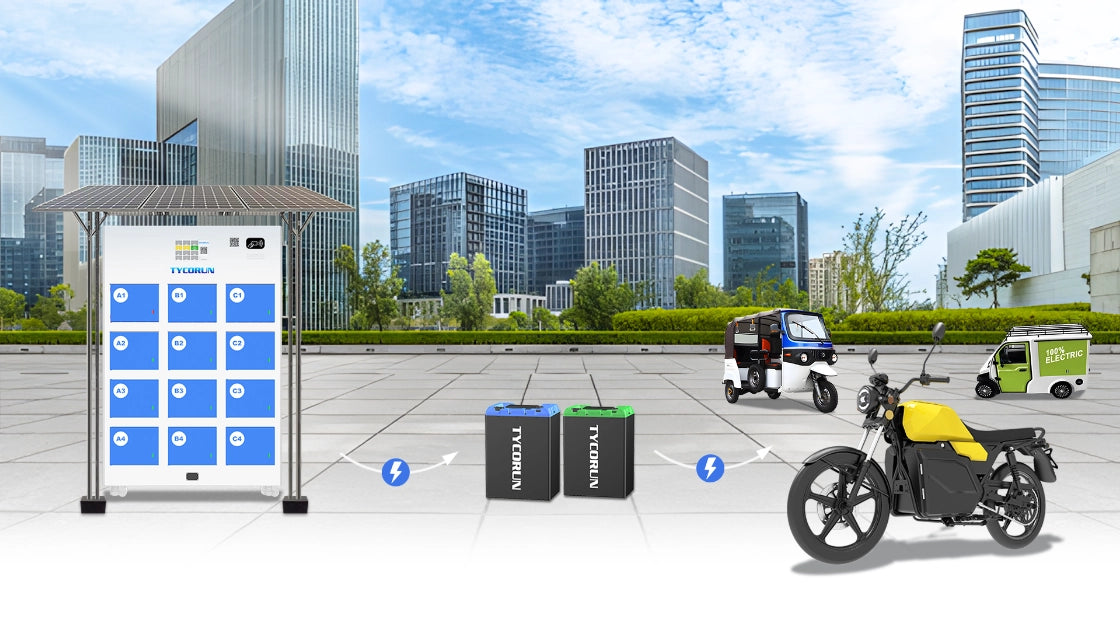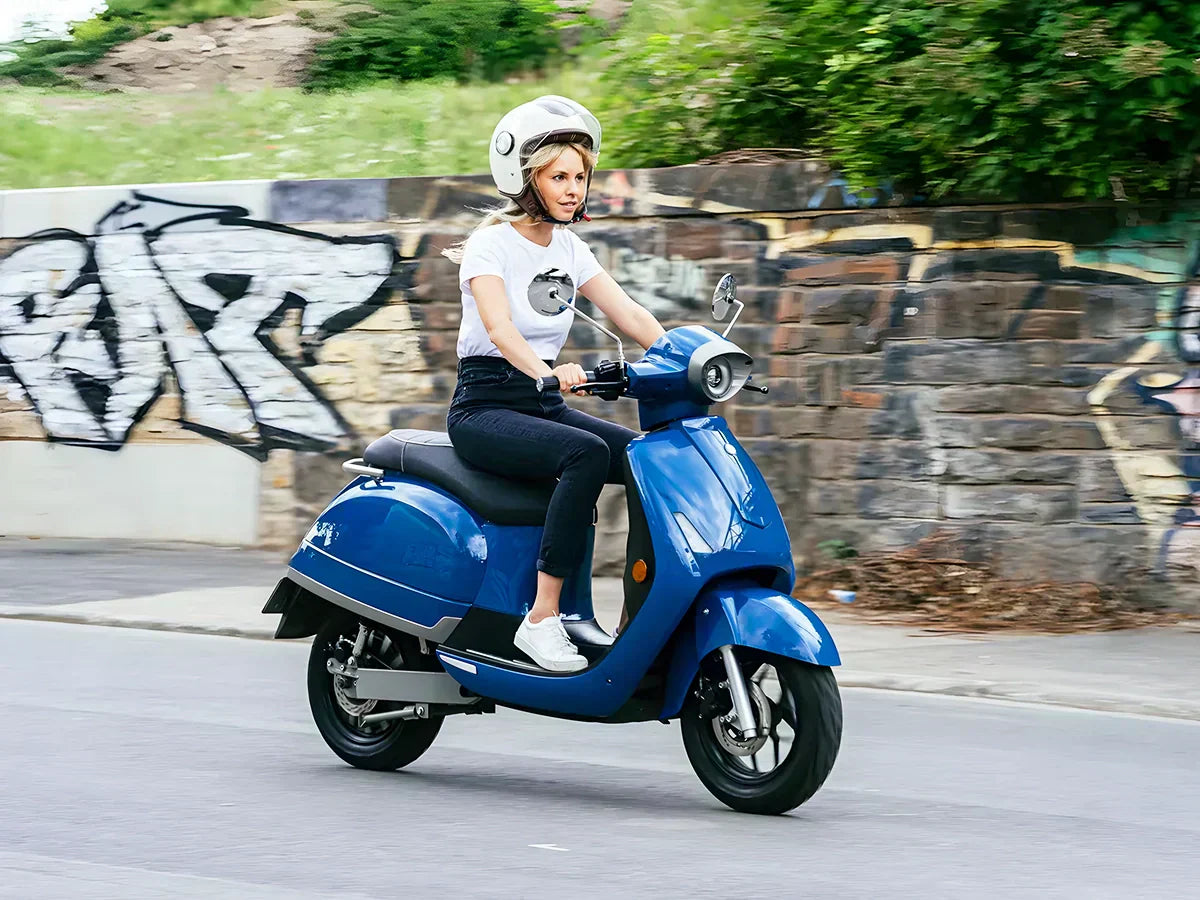
Main content:
- How Long Does a Scooter Battery Typically Last?
- Key Factors Influencing Scooter Battery Life
- How Many Times Can You Recharge a Scooter Battery?
- How to Select a Long-Life Scooter Battery
- Which Battery Offers the Longest Lifespan?
- Tips to Maximize Electric Scooter Battery Life on the Road?
- Conclusion
- FAQ
Electric scooters are rapidly becoming a preferred choice for commuters and casual riders alike. They’re cost-effective, eco-friendly, and easy to maintain. Yet, behind all their convenience lies one critical component that determines performance and reliability — the scooter battery life.
In this article, we'll explore about scooter battery life, from how long it lasts, what affects it and this guide will help you make smarter decisions about your scooter's power source.
How Long Does a Scooter Battery Typically Last?
When people talk about scooter battery life, they usually mean two things: how far the scooter can travel on a single charge (daily range) and how many charging cycles the battery can handle before it starts losing capacity (lifespan). These aspects depend on several key factors:

- Battery Chemistry
Between Lead acid vs Lithium ion, Lithium-ion batteries is the most common in today’s scooters, last about 500–1,000 cycles (2–4 years). Lead-acid batteries only reach 200–300 cycles, while advanced lithium iron phosphate (LiFePO4) can achieve 3,000–4,000 cycles, making them the longest lasting. Check Lifepo4 vs lead acid for more comparison.
- Material Quality
High-grade materials provide better durability. Premium cells from trusted manufacturers significantly extend scooter battery life.
- Manufacturing Process
Batteries produced under strict quality controls are more consistent, safe, and reliable over the long term.
In short, both the design and the build quality of a battery play a direct role in how long it will last.
Key Factors Influencing Scooter Battery Life
A number of factors play a crucial role in determining electric scooter battery life. These include how the scooter is used, how often it’s charged, and even the environment it operates in. Below are the key considerations:

- Charging and discharging habits
The way you charge and drain a battery has a big impact on its durability. Consistently running it down to empty or always pushing for a full recharge can reduce its cycle life. Using solutions like a battery swapping station with automatic cut-off features is a safer option
- Routine care and upkeep
Following manufacturer guidelines, performing regular electric scooter maintenance, and avoiding extreme conditions help extend battery performance. This includes charging correctly, keeping the scooter away from excessive heat or cold, and checking for loose wiring, damage, or wear before it becomes a bigger issue.
- Riding style
Aggressive acceleration and consistently riding at top speed put extra stress on the battery, which may shorten its usable life.
- Charging frequency
Recharging too often, especially after deep discharges, accelerates battery wear. It’s generally better to avoid letting the battery drop too low and instead keep it within moderate charge levels.
- Number of charge cycles
Every battery has a limited number of cycles. Reducing unnecessary full recharges can help preserve capacity over time.
- Charger compatibility
Always use chargers that match the scooter maker's specifications. Overcharging or using the wrong charger risks damaging the battery.
- Environmental conditions
Both extreme heat and freezing temperatures negatively affect performance. Ideally, scooters should be used and stored in moderate climates. Excessive humidity or water exposure can also harm the battery and its components.
How Many Times Can You Recharge a Scooter Battery?
The exact number of charges depends on the type of battery installed:

- Lead-acid batteries: Around 200–300 charge cycles.
- Standard lithium-ion batteries: Typically 500–1,000 cycles.
- Advanced lithium-ion chemistries (like LiFePO4): Often more than 4,000 cycles.
These figures are averages. The real outcome depends on charging habits, environmental conditions, and how the scooter is used. For example, riders who constantly drain their battery to zero will shorten scooter battery life faster than those who recharge before hitting low levels.
How to Select a Long-Life Scooter Battery

When choosing a long-life scooter battery, there are several important aspects to keep in mind. The type of chemistry plays a major role like lithium-ion is generally the most reliable, offering the best durability. You’ll also want to check the cycle life rating, since batteries with 1,000 cycles or more provide longer usability. A high depth of discharge (around 80%) allows you to use more of the capacity without cutting the lifespan short, while low self-discharge ensures the battery holds power even after long periods of storage.
Brand reputation is another factor — trusted brand like TYCORUN are known for delivering efficient and durable swappable battery for electric scooter. Last, don’t overlook warranty coverage, as a longer warranty often reflects stronger confidence in the battery’s quality. By weighing all these factors carefully, you can make sure your scooter battery life supports both daily rides and long-term performance.
Which Battery Offers the Longest Lifespan?
Among current technologies, lithium iron phosphate (LiFePO4) batteries stand out. They’re widely used in electric scooters designed for long-term performance.

Compared to lithium cobalt oxide or lithium manganese oxide, LiFePO4 batteries are more stable, safer, and capable of thousands of charge cycles. This makes them an excellent choice for riders who prioritize extended scooter battery life over time.
Tips to Maximize Electric Scooter Battery Life on the Road?
In this section, you’ll discover helpful tips to keep your electric scooter running until you reach a near battery swapping stations. Although TYCORUN scooters are designed to carry two batteries in a single ride before needing a swap—providing an impressive range of around 140 km at 45 km/h using dual 72V 30Ah lithium batteries, sometimes comfort and smooth riding can distract you, and you might miss the moment to swap when your battery indicator drops to around 30%. To help prevent that scenario, here are practical tips to maintain your battery supply on the road.
- Ride Smoothly – Avoid sudden acceleration and heavy braking. A steady pace uses less energy and reduces strain on the battery.
- Maintain Moderate Speed – Riding at very high speeds drains the battery quickly. Keeping a balanced speed helps extend range.
- Limit Extra Load – Carrying heavy items increases battery demand. Travel light when possible.
- Avoid Extreme Terrain – Steep hills and rough roads consume more power. Choose smoother routes if available.
- Check Tire Pressure – Properly inflated tires reduce rolling resistance and improve efficiency.
- Monitor Battery Level – Keep an eye on the battery indicator so you can adjust your riding style if power gets low.
Following these practices will help you make the most of your scooter battery life during rides, especially when planning to reach a battery swapping point without running out of power.
Conclusion
Scooter battery life is not just a technical detail — it’s the backbone of dependable, enjoyable, and sustainable riding. Understanding what influences it, practicing smart charging and riding habits, and selecting high-quality batteries all play a crucial role in maximizing performance.
With battery swap technology, you no longer need to worry about your scooter battery life running low. You simply ride to a swap station and receive a fully charged, well-maintained battery in seconds. TYCORUN's battery swap stations are specially designed to keep batteries in prime condition during charging, independent of how riders use them. At the same time, riders are encouraged to stay involved in caring for their batteries, making it a shared effort between the station and the user.
Whether you're purchasing a new scooter or maintaining the one you already own, focusing on scooter battery life — supported by battery swapping convenience — not only saves money and avoids downtime but also contributes to cleaner and smarter transportation for the future.
FAQ
1. When should I replace my scooter battery?
If you notice a sharp drop in range, unstable voltage, or the battery struggles to hold a charge, it’s time to consider a replacement.
2. What happens if I ride my scooter with low battery too often?
Running the battery down to near zero frequently stresses the cells, shortens cycle life, and can damage internal components.
3. Do bigger batteries mean longer scooter battery life?
A larger battery gives more range per charge, but it doesn’t always mean longer lifespan. Battery chemistry, quality, and maintenance matter more for durability.
Related Articles: Electric motorcycle battery, Lithium motorcycle battery, Motorcycle battery voltage
















